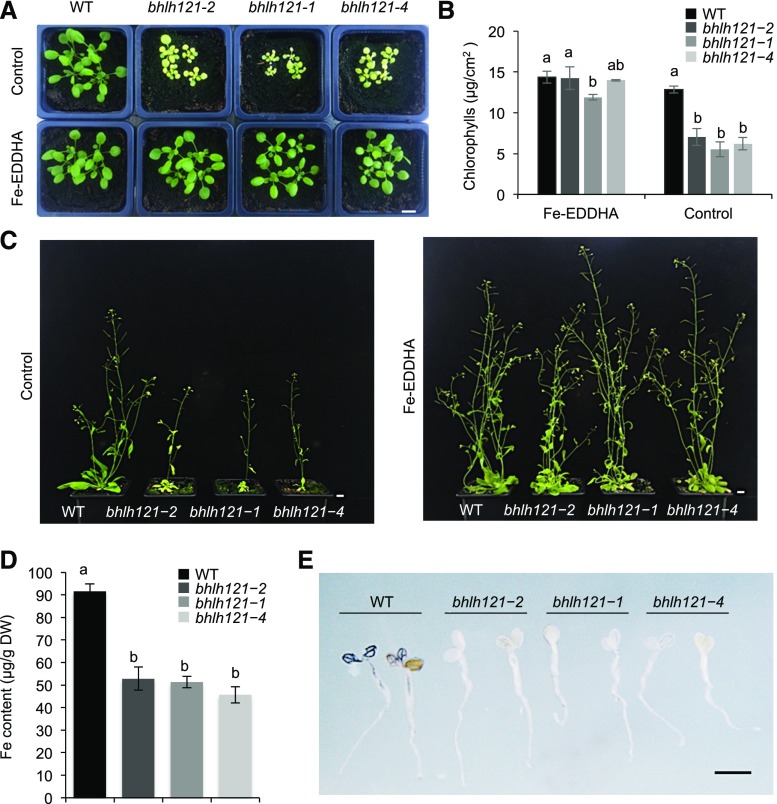Figure 3.
bhlh121 Loss-of-Function Mutants Have Decreased Tolerance to Fe Deficiency and Accumulate Less Fe in Seeds Than the Wild Type.
(A) Phenotype of the wild-type (WT) and bhlh121 loss-of-function mutant seedlings grown in soil for 3 weeks and watered or not with ferric ethylenediamine di-(o-hydroxyphenylacetate) [Fe-EDDHA, 1‰ (w/v)], a form of Fe easily assimilated by plants.
(B) Chlorophyll content of the wild type (WT) and bhlh121 mutants grown in soil for 3 weeks and watered or not with ferric ethylenediamine di-(o-hydroxyphenylacetate) (Fe-EDDHA).
(C) Phenotypes of the wild type (WT) and bhlh121 mutants grown in soil for 6 weeks and watered or not with ferric ethylenediamine di-(o-hydroxyphenylacetate) (Fe-EDDHA).
(D) Fe content in seeds of the wild type (WT) and bhlh121 mutants grown in soil in the absence of ferric ethylenediamine di-(o-hydroxyphenylacetate) (Fe-EDDHA).
(E) Fe distribution (Perls/DAB staining) in 4-d-old wild-type (WT) and bhlh121 seedlings. Fe accumulation appears in black.
(B) and (D) Means within each condition with the same letter are not significantly different according to one-way ANOVA followed by post hoc Tukey test, P < 0.05 (n = 3 biological repeats from one representative experiment). Error bars show ±sd. A biological repeat comprised a pool of leaf disc samples from three seedlings in (B) and ∼10 mg of seeds in (D). Each experiment was repeated three times. Bar in (A) and (C) = 1 cm; bar in (E) = 1 mm.

